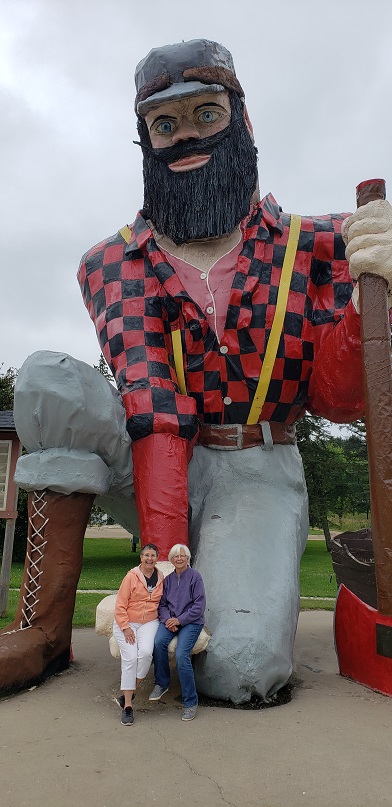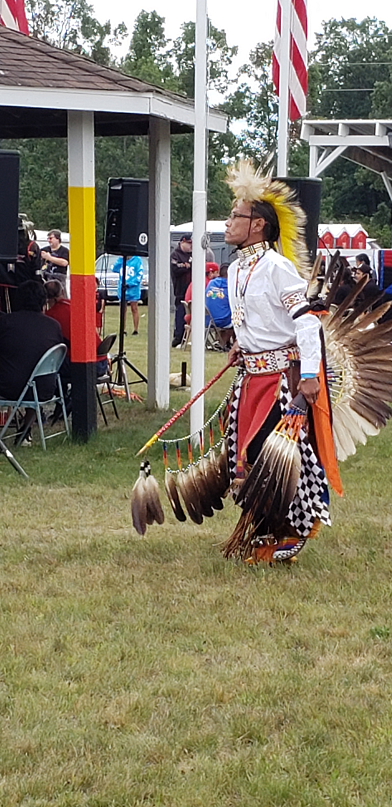Last Updated on November 13, 2022
I had never before visited northern Minnesota (or any other part of Minnesota, for that matter), yet here we were in mid-August beginning our 8-day vacay in a cabin on a lake in a region called Park Rapids – not close to any place that sounds familiar. Nay-sayers had warned me about the man-eating mosquitoes and sticky humidity… if not an early snowfall. What did they know?
We were visiting close, long-time friends and their families who have spent every summer, without fail, in northern Minnesota for decades. Not just one or two decades, but five or six decades…maybe more. No exaggeration. Starting with one cabin built in the 1920’s by the family patriarch, the number is now 15, all within walking distance of each other. Four generations come and go all season. Husbands, wives, aunts, uncles, cousins, grandchildren, great-grandchildren, friends, new-comers like us. Every day, the extended family coordinates dinner plans, and they eat together. Coming from East Coast urban settings and a small family, I am totally unfamiliar with such traditions, but was totally delighted to be included. BTW, the original cabin is still in use in its original design.
Everywhere in northern Minnesota are trees – mostly pines – red pine, white pine, Norwegian pine, Jack pine – and also lots of birch trees. Thousands and thousands of trees. Acres of them. Beautiful miles of them.
One day we drove to Itasca State Part. The Visitors Center alone, with its thoughtful, engaging displays and interpretations of the region’s history, Native American population, and natural resources, is worth the trip. Here in this park is where the Mississippi River begins its 2,552-mile journey all the way down to the Gulf of Mexico. Interesting factoid: “Itasca” is a combination of two Latin words: “itas” from “veritas” meaning “truth” and “ca” from “caput” meaning “head.” Hence, we have “itasca” or the “true head” of the Mississippi River.

Before returning home, we stopped in the tiny town of Akeley (population about 400) to take photos of ourselves sitting on the hand of a ginormous, kneeling statue of Paul Bunyan.
We were lucky to be visiting Minnesota when the Pine Peaks Community of the Ojibwe Tribe had scheduled their annual pow-wow. The participants were elaborately dressed in every imaginable color as they rhythmically danced in large circles, chanting. I was captivated and felt privileged to be attending. Small drumming groups of young men competed with each other.

I collected hand-outs promoting the tribe’s opposition to local industries that threaten biodiversity, human health, and Native American cultural survival. At a food stand, I tried the tasty wild rice chicken soup, and I purchased a nice sweatshirt that says “Mother Earth Matters.” I didn’t notice the background motif: a big green cannabis leaf. Later, back home, a friendly neighbor coyly identified it: “Is that marijuana,” she asked, nodding toward my shirt. Wink-wink.
Talking about wild rice, I had not known that, by law, only Native Americans are permitted to harvest and process it. It grows naturally in the many lakes and rivers in that region, and the Ojibwes and other Tribes have historically depended on it as a nutritious food. Of course, I bought a bag and, once home, made a delicious wild rice dish containing onions, apples, dried cranberries, and pecans. Factoid: wild rice is not a true rice – it’s a grain.
One morning we pigged out at an old logging camp breakfast place. The food was plentiful and filling, but the coffee was terrible. After stuffing ourselves, we strolled around the camp grounds, absorbing the old logger life-style and gawking at the equipment and methods that were used to fell huge trees and get them to market. Little is left of Minnesota’s old-growth pine forests.
Back at our cabin, we enjoyed opening the windows every night, sleeping in a deliciously cool room, gazing at the lake, and listening for the weird calls of the loons. One morning we awoke to the steady, rhythmic splashing sound of a swimmer passing by. The splattery sound that followed was made by his dog swimming behind him. Another morning, we watched two young men navigating their way up-lake in standing row boats. They were shrouded in mist. The water carried the sound of their muffled voices as they drifted by.
We felt kind of sad to end this wonderful and (for us) unusual vacation. We should not have been surprised when our friends and all their available family members followed us out the door, singing “Happy Trails To You” as we departed.
Julie Helms
